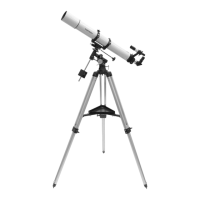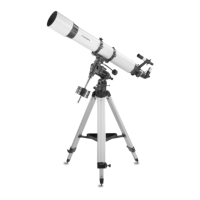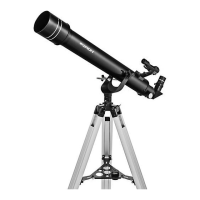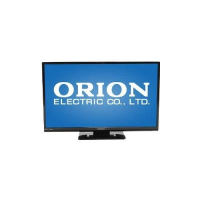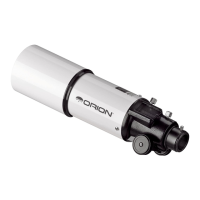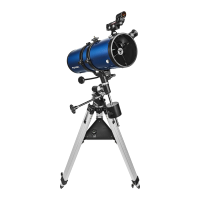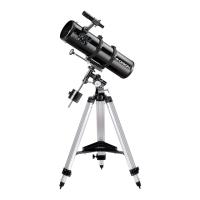9
Functions of the Hand Controller
There are four main categories of control buttons on the hand
controller (Figure 13):
1. Mode buttons
2. Directional buttons
3. Scroll buttons
4. Dual Purpose buttons
Mode Buttons
The three mode buttons are located at the top of the controller,
directly below the LCD display. They include the ESC, ENTER,
and SETUP buttons:
The ESC button is used to escape from a certain command or
go back a level in the menu tree.
The ENTER button is used to select the functions and sub-
menus in the menu tree, and to confirm certain functional
operations.
The SETUP button is a “hot key” that takes you to the Setup
menu.
Directional Buttons
The directional buttons allow the user to have complete control
of the mount at almost any step in operation. These controls
are locked out when the telescope is slewing to an object. The
directional buttons are very helpful when initially aligning the
Atlas EQ-G, centering objects in the eyepiece field of view,
and manual guiding. The directional buttons are typically used
in conjunction with the RATE button. The left and right direc-
tional buttons can also be used to move the text cursor when
entering data on the hand controller.
Scroll Buttons
The up and down scroll buttons allow you to scroll up and
down within the menu tree or selections displayed on the hand
controller screen.
Dual Purpose Buttons
The dual purpose buttons serve two distinct purposes. They
are used for data entry and as quick reference keys.
TOUR button: Takes you on a preset tour of the best night sky
objects visible
RATE button: Changes the speed of the motors when the
directional buttons are pressed. There are 10 speeds to choose
from, with 0 being the slowest and 9 being the fastest.
UTILITY button: “Hot Key” access to the Utility Functions
menu.
USER button: Enter or recall coordinates for up to 25 objects
in the user-defined database.
ID button: Identifies the object the mount is currently pointing
to.
NGC, IC, M, Planet, and Object buttons: Allow direct access
to catalogs and databases of over 13,400 objects.
Hand Controller Operation
Initial Setup
1. Perform the polar alignment using the procedure previously
outlined in Section 6. A rough polar alignment will suffice,
but an accurate polar alignment using the polar axis finder
scope will increase tracking accuracy (and pointing accu-
racy for one-star alignments).
2. Point the telescope you have mounted on the Atlas EQ-G
roughly to the North Celestial Pole (or Polaris) if you are
in the Northern Hemisphere. Point to the South Celestial
Pole if viewing in the Southern Hemisphere. Make sure the
counterweight shaft is pointed down as seen in Figure 1.
This will be the home position of the telescope.
3. Turn on the power switch on the mount
4. The initial screen displayed on the hand controller is the
version screen. Press ENTER to proceed.
5. The words “Begin Alignment?” will display on the hand con-
troller screen. Press ENTER to proceed to the alignment
procedure. (At any point, you can press ESC to exit to the
main menu).
Note: The hand control’s backlit display will become more
dim and the illuminated buttons will turn off if left idle for
30 seconds. Pressing any button will re-illuminate the dis-
play.
6. Enter the telescope’s current latitudinal and longitudinal
position using the numeric keypad and scroll buttons. First
enter the longitudinal coordinate and hemisphere (W or E), fol-
lowed by the latitudinal coordinate and hemisphere (N or S). If
Figure 13. The Atlas EQ-G hand controller.
Display screen
Mode buttons
Directional
buttons
Dual purpose
buttons
Scroll buttons
